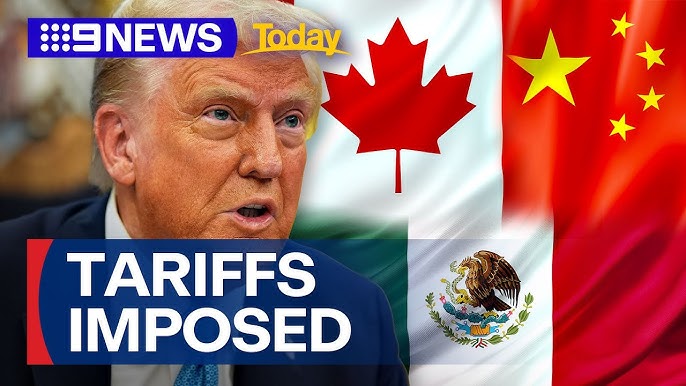In the early months of 2025, the longstanding economic alliance between the United States and Canada—one of the world’s closest trading partnerships—faced its most severe test since the renegotiation of NAFTA into the USMCA in 2018-2020. Under President Donald Trump’s second administration, sweeping tariffs on Canadian imports ignited a bilateral trade war, threatening billions in cross-border commerce and straining diplomatic ties. By August 2025, after months of escalation and retaliation, a partial de-escalation emerged, but the conflict’s repercussions continue to ripple through North American economies. This article delves into the origins, key events, and ongoing impacts of this tariff tussle.
The Spark: Trump’s Protectionist Push and Initial Tariffs
The trade tensions reignited almost immediately after Trump’s inauguration in January 2025. Campaigning on an “America First” agenda, Trump promised to address perceived trade imbalances, including the US’s $75 billion trade deficit with Canada in 2024. On February 1, 2025, the White House issued an executive order imposing 25% tariffs on nearly all Canadian imports, with a carve-out for oil and energy products taxed at 10%. This move targeted sectors like automobiles, steel, aluminum, and agricultural goods, echoing Trump’s 2018 tariffs that had previously disrupted supply chains.
Trump justified the tariffs as necessary for national security and to boost domestic manufacturing, stating they would “bring jobs back to America” and counter unfair trade practices. Canadian Prime Minister Mark Carney condemned the action as “unjustified and damaging,” warning of immediate retaliation. The tariffs went into effect on February 4, affecting over $400 billion in annual bilateral trade—the world’s largest between any two countries.
Escalation: From Threats to Higher Duties
As negotiations stalled, the conflict intensified. By March 2025, the US escalated tariffs to 35% on Canadian products not compliant with USMCA rules of origin, particularly in autos and steel. This targeted Canada’s export-heavy industries, where the US accounts for 75% of Canadian goods shipments. Trump further threatened blanket tariffs of 15-20% on all imports, including from Canada, if trade deficits persisted.
Canada responded swiftly. On March 4, 2025, Ottawa imposed countermeasures on $30 billion worth of US imports, including orange juice, peanut butter, wine, and other consumer goods—mirroring 2018 retaliatory lists designed to hit politically sensitive US states. These duties aimed to pressure US industries and lawmakers, with Carney emphasizing that “Canada will not be bullied.” The move exacerbated supply chain disruptions, raising costs for US manufacturers reliant on Canadian raw materials like lumber and metals.
By May, analysts warned of broader economic fallout. A Tax Foundation report estimated that the tariffs could shave 0.7 percentage points off US GDP growth in 2025, while Canadian exports faced a potential 10-15% decline. The auto sector, integrated across borders, suffered particularly, with companies like Ford and General Motors reporting increased costs and delays.
Diplomatic Maneuvering and Retaliatory Measures
High-level talks between Trump and Carney, including a tense White House meeting in April, failed to yield immediate breakthroughs. Trump accused Canada of “unfair subsidies” in dairy and softwood lumber, while Canada highlighted US protectionism as a violation of USMCA spirit. The dispute spilled into other areas, with Canada threatening to restrict US access to critical minerals like nickel and cobalt, essential for EVs.
Public sentiment soured on both sides. In the US, businesses lobbied against the tariffs, citing higher consumer prices; in Canada, polls showed strong support for retaliation, with 70% of Canadians backing Carney’s stance. The trade war also strained NATO alliances, as Canada increased defense spending but tied it to trade concessions.
The Turning Point: Partial De-Escalation in August
A breakthrough came in late August 2025. Following a phone call between Trump and Carney, Canada announced it would drop most retaliatory tariffs effective September 1, exempting goods covered under USMCA and aligning with US exemptions for compliant products. However, tariffs on US steel, aluminum, and autos remain in place, signaling ongoing friction in key sectors.
The White House hailed the move as a “win for American workers,” with Trade Representative Peter Navarro noting expectations for Canada to match US tariff reductions. Carney framed it as a “pragmatic step” to protect jobs while maintaining leverage. This partial truce averted a full-blown crisis but left higher baseline tariffs intact, with the US at 10-25% on various goods.
Economic and Political Impacts
The trade war has already inflicted costs. US consumers face higher prices for Canadian imports like beer and maple syrup, while Canadian exporters report losses exceeding $5 billion in the first half of 2025. Ironically, some analysts argue the tariffs backfired on the US, boosting Canadian unity and diversifying trade toward Europe and Asia.
Politically, it bolstered Trump’s base but alienated allies, complicating global issues like China trade. For Canada, it elevated Carney’s profile as a defender of sovereignty. Broader effects include strained supply chains and inflation pressures, with the IMF warning of a 0.2% drag on North American GDP.
Looking Forward: Uncertain Path Ahead
As of August 25, 2025, the US-Canada trade war appears paused rather than resolved. With USMCA review clauses looming in 2026, further negotiations are inevitable. Experts urge a return to free trade principles to avoid long-term damage, but Trump’s protectionism suggests tariffs may become a new normal. For now, this episode underscores the fragility of economic interdependence in an era of nationalism, with both nations navigating a delicate balance between competition and cooperation.


